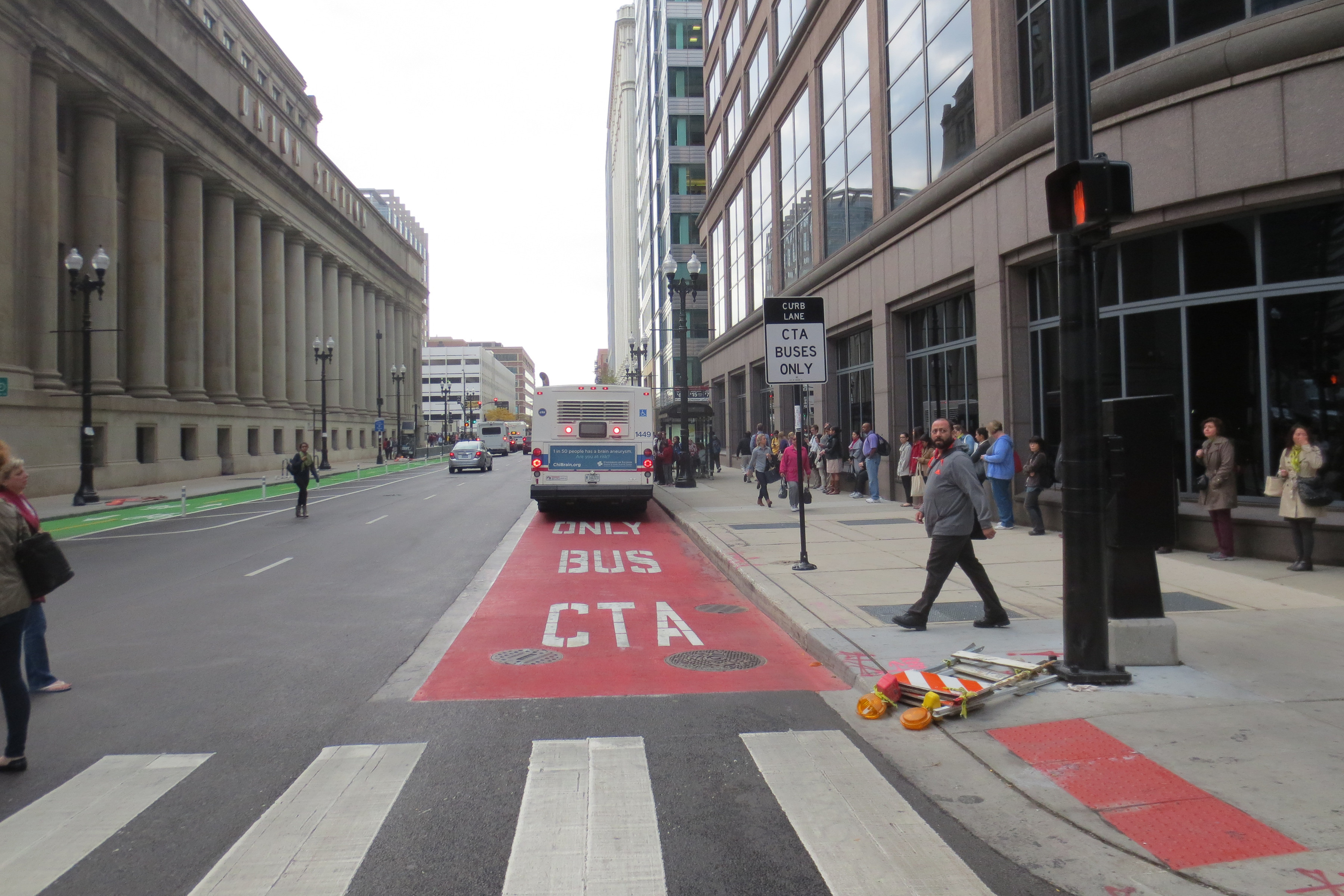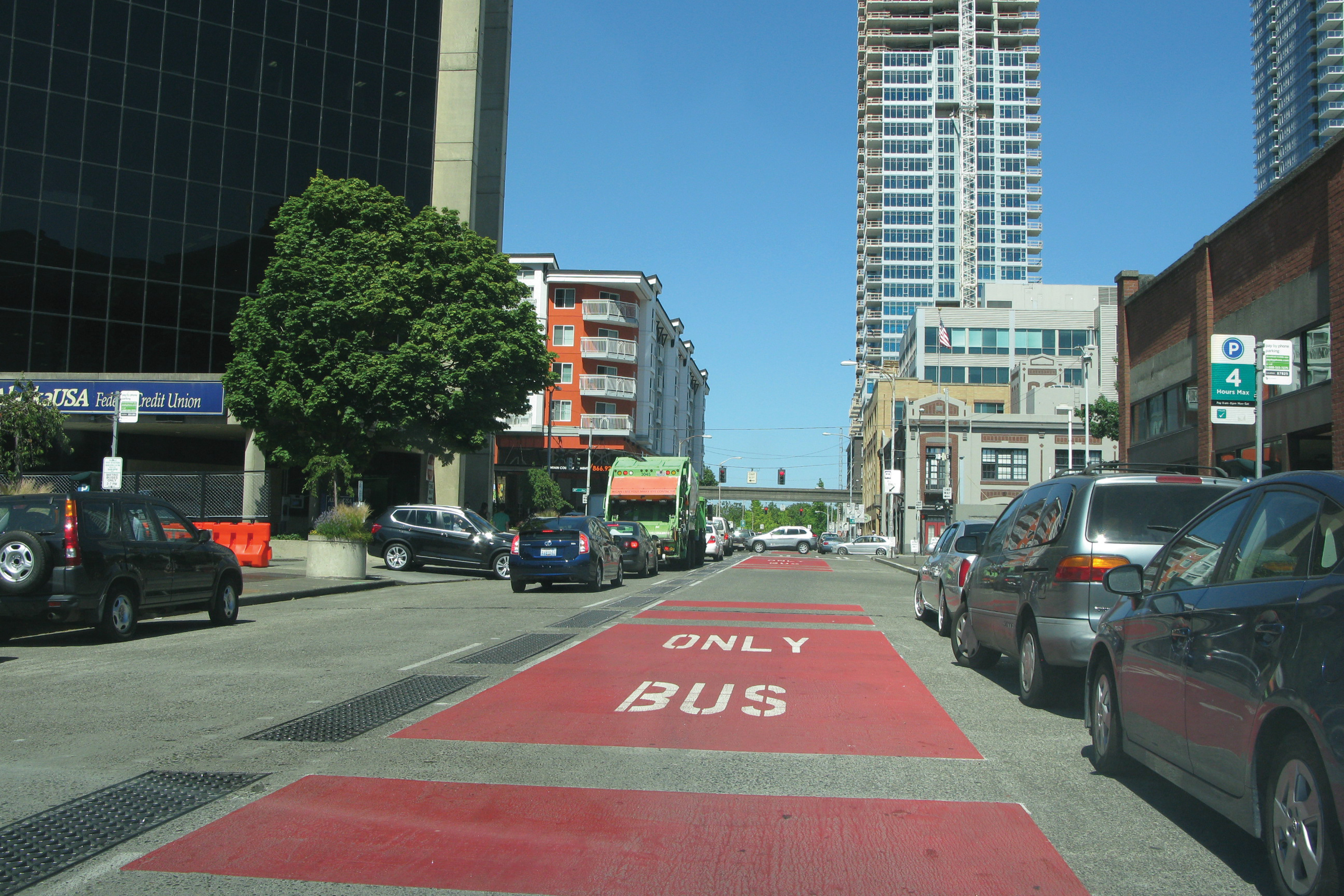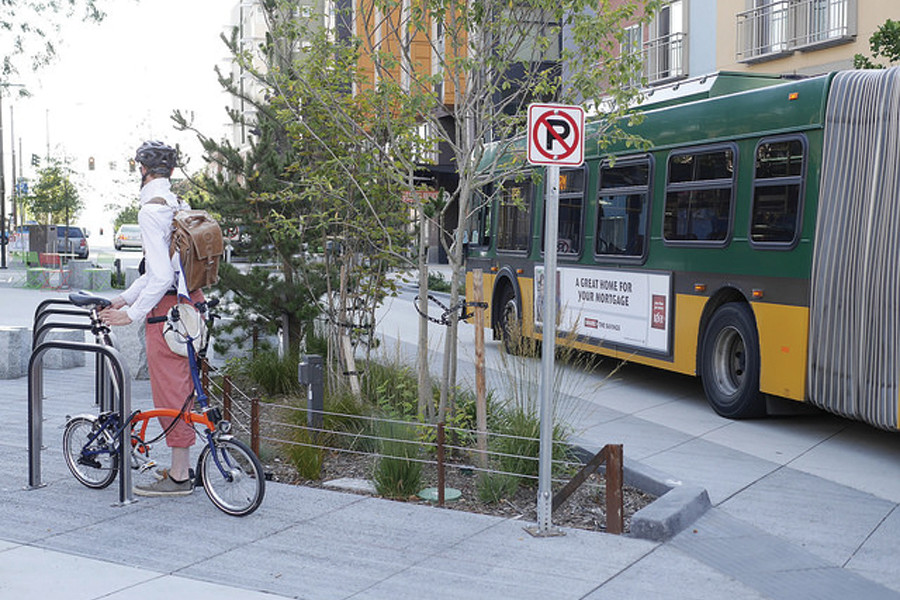EMBEDDED COLOR

credit: Chicago DOT
Asphalt or concrete can be mixed with a red pigment, eliminating the need to reapply a red colored surface treatment.
Tinted asphalt uses special aggregate and binder. Tinted asphalt materials and implementation costs are somewhat higher than for untinted asphalt, but prevents multiple reapplications of color.
Repairs, such as patching and pothole filling, as well as utility trenching, complicate the use of embedded color, as repair materials must match or be colored to match the pavement.
Colored microsurface pavements have shorter life cycles, especially in harsh or snowy climates; color should be mixed through the entire top concrete layer.
High Friction Surface Treatments (HFST) can be embedded with colored glass to provide a distinctive and durable surface even when repaving is not possible. HFST can enhance both bus and bike traction on curves or downhill sections.
INTERMITTENT COLOR

credit: Seattle DOT
Where red lanes are not employed for the length of a transit lane segment, a solid red stripe can highlight key sections of a transit lane such as stops or sections with turn prohibitions, which help to self-enforce lane restrictions.
To save the expense of applying red color to entire road segments, a red thermoplastic or painted backing can be applied around the “BUS ONLY” lane markings.
The backed message may not have the passive enforcement value of a completely red lane, but can increase the visibility of the restriction.
CONTRAST

credit: Seattle Bike Blog
Color variations subtly suggest street space and modal zones while increasing the use of space by people on foot in shared environments. High contrast enables people with low vision to distinguish between two spaces, including two spaces at the same grade.
Lighter colored pavers and concrete that have higher solar reflectance (albedo) can help maintain a cooler, more comfortable street environment.
Read More+
Unit pavers of a variety of sizes and colors can be used in on-street railbeds to designate the streetcar path. Use different colors, orientation, or texture of pavers to designate the edge of the travel path and discourage other vehicles from entering or blocking.
On routes where the bus is not limited to a fixed path, select large paving blocks, as smaller pavers are subject to shifting under the weight of a bus. Where a bus is provided a fixed path, concrete or large pavers can be used for the path of the bus wheels, with smaller paving blocks adjacent to the running way and between the two running courses, forming a visual guideway.